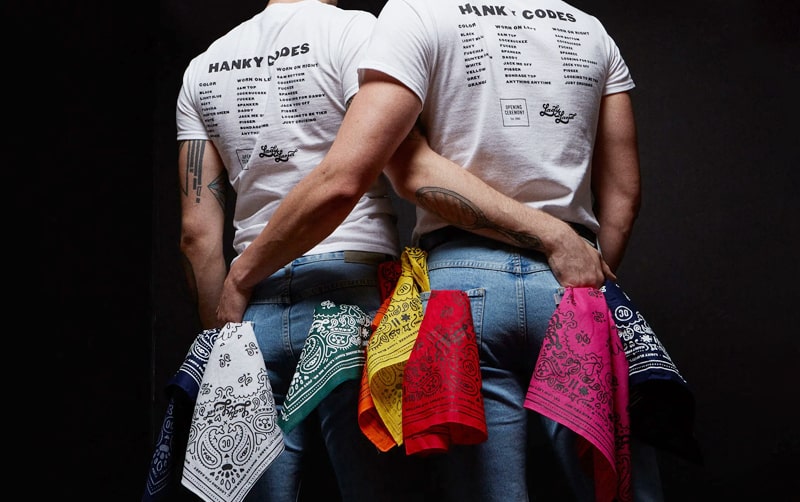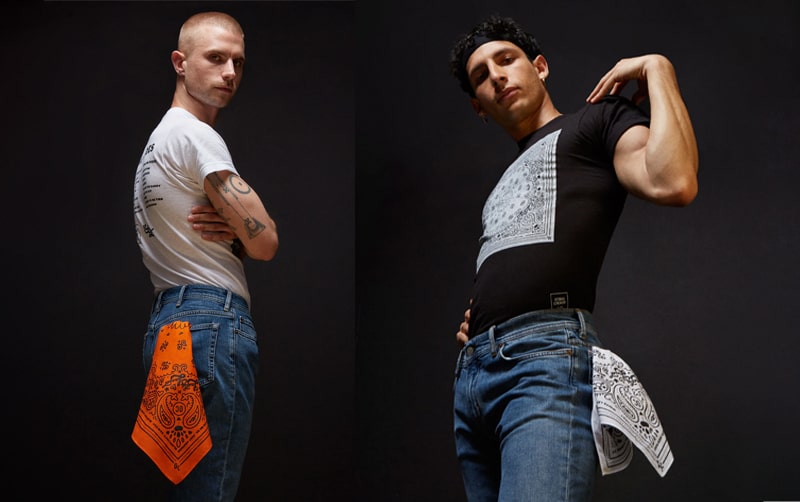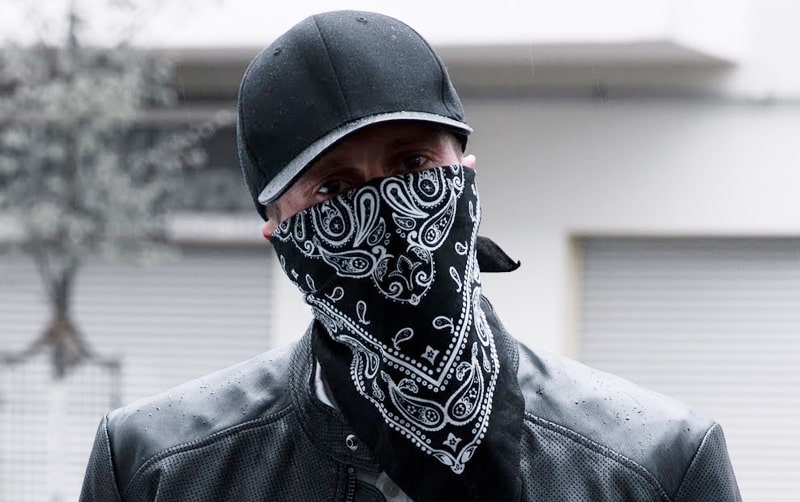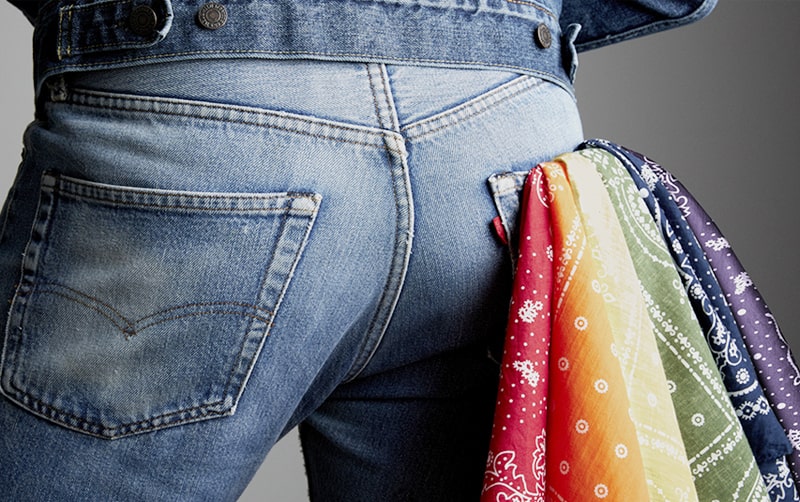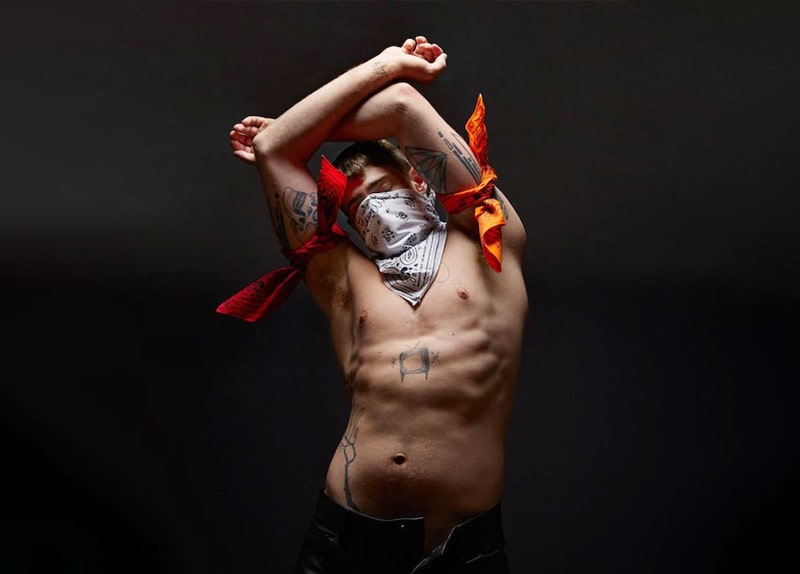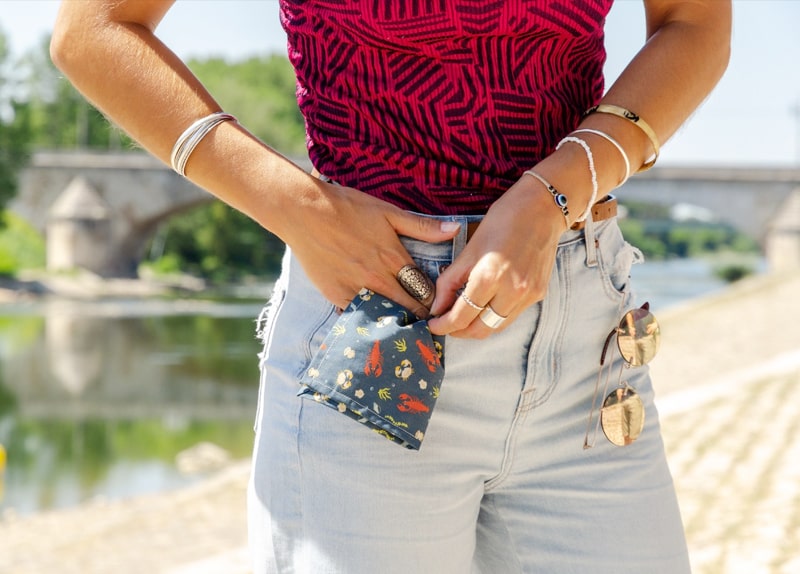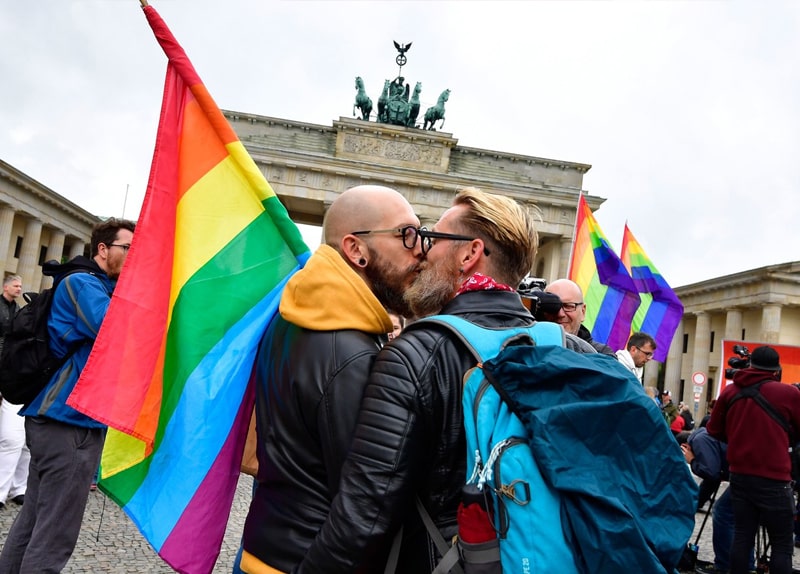Are you wondering how to master the gay bandana code and how to use it? You are on the right page. A gay bandana or hunky is a symbol that queer men sometimes use to express their sexual preferences. As a gay man, the pattern, position, and color of your bandana can tell people your sexual orientation and the type of sex you enjoy.
For decades, bandanas have been an important symbol in the fight for queer sexual liberation. At a time when queer men couldn’t openly express or pursue their sexual preferences, the gay bandana code was useful in providing a safe manner for gay men to interact.
In this article, we will discuss what the gay bandana code is and give you tips to master the hanky code in minutes.
What is the gay bandana code?
Unless you live under a rock, you know there is a close relationship between colors and the queer community. Long before colorful queer symbols, including chains, rings, flags, and glasses, became trendy, gay men had secret symbols for communication.
Specifically, the gay bandana is a symbol of expression for queer men who want to disclose their sexual preferences to other queer men.
Master your gay bandana (hanky) code in 5 minutes.
The gay bandana code is a subtle yet powerful tool used by the LGBTQIA+ community to communicate their sexual preferences and interests discreetly. The hanky code has been around for generations and continues to evolve in different variations to this day.
Whether you want to master the gay bandana code to learn discrete ways of communication with other gay men or for nostalgic reasons, mastering the hanky code can be useful. Here’s a guide on how to master the gay bandana code:
· Understand the important history of the gay bandana code
The origin of the hanky bandanas goes back to the 70s and 80s when gay men used secret codes and language to communicate with other gays.
Because of persecution, fear, and the stigma surrounding homosexuality, some members of the LGBTQIA+ community developed secret symbols such as colorful bandanas to disclose their sexual preferences to each other and connect with others who shared similar interests.
The gay bandana code was one of the most popular symbols, becoming a unifying symbol for marginalized groups, including the gay, BDSM, and leather communities. Gay men wore colorful hankies in strategic places, allowing them to silently communicate their sexual preferences and fetishes without fear of backlash or discrimination.
By wearing a specific color of the bandana in a certain way, individuals could easily indicate their interests to others who were familiar with the code.
Over time, the gay bandana code has evolved and expanded to include new symbols that represent the diversity of the queer community. As more colors and symbols continuously emerge and represent the gay community, the gay bandana code has become less popular.
While the gay bandana code is still in use in some parts of the queer community, it’s not as widely recognized or used as it was in the past.
· Understand the colors and their meanings
It’s virtually impossible to master the gay bandana code if you don’t understand what its various colors represent. The gay bandana code uses different colors to represent different sexual preferences or interests.
Each color of the bandana represents a specific preference or fetish. You can wear a red bandana, which tells potential sexual partners that you like to experiment with dominance and submission in the bedroom. A black bandana can be a gay code for someone with a fetish for leather, while a green bandana can indicate a fetish for voyeurism or exhibitionism.
Keep in mind that the gay bandana codes are not universal. Depending on the community, region, age, or sexual orientation, specific colors can have different meanings, so it’s important to keep an open mind. For instance, a yellow bandana can symbolize an incarceration fetish in one region and a symbol of penetration in another.
The best way to learn the gay bandana code is to educate yourself on the current color codes with the understanding that they can change over time. Understand that some individuals may use the bandana code differently, and it’s always best to communicate and clarify with each person you encounter.
Keep in mind that the bandana code is just one aspect of communication within the LGBTQ+ community, and it’s crucial to respect each individual’s personal preferences and boundaries.
· Where you position your gay bandana matters
As a gay man, it’s important to know where to place your bandana in order to pass the right message to potential partners. You can’t just wear a red bandana and assume people can decode your sexual preferences.
Placing the bandana in different places in the body has varying meanings.
For instance, wearing a gay bandana on the left side of your body creates the impression that you prefer to be submissive while wearing a bandana on the left side can indicate that you like to dominate your sexual partners.
Before you use the gay bandana code to communicate your sexual preferences, it’s important to research to understand the meaning behind placing colorful hankies on different body parts.
If you have a fetish for fisting, a bandana on the left side of your arm, shoulder, or breast pocket will broadcast your love shoving your fists up people’s asses, while wearing it on the right side tells potential filters that you are willing to play.
If you are versatile or verse, tying a bandana around your upper arms discloses to other gay men that you can comfortably explore different sexual positions. A versatile person in the gay community is someone who can take on the dominant and submissive role during sex.
· Keep up with the latest codes
The gay bandana code is constantly evolving, so stay informed on the latest updates and changes. While the goal behind the invention of the gay bandana code is no longer an issue, some gay people still wear hanky codes to communicate their unorthodox sexual preferences.
Queer people still use hanky codes to seamlessly communicate what they prefer to others that share their sexual interests.
In addition to the generic colors that have been around since the 70s, the hanky code has several other patterns for various subgroups under the queer banner. For instance, you can wear a fur-covered bandana to show that you are comfortable with sexual acts that involve bestiality.
If you are a skinhead, you can use a Union Jack bandana, while individuals with leopard prints have an inkling toward leopard print bandanas.
Another latest addition to the gay hanky code is the red gingham hanky, which represents individuals who have a fetish for gay cruising. For individuals who like to cuddle, a teddy bear hanky is an ideal symbol, while those who prefer outdoor sex can wear a net bandana.
Keep in mind that the code changes and expands depending on community, culture, and place. If you want to use the right gay code colors and patterns, you need to keep up with the latest updates. You can do this by attending LGBTQ+ events, following LGBTQ+ organizations, or reaching out to community members.
· Be aware of your surroundings
Because of the efforts of the queer rights movements, gay people are relatively safer in most communities. Unlike in the past when queer people were subject to persecution, ostracism, and social and political stigmatization, most modern gay men are relatively safe and free to explore their sexuality.
As a gay man, you can wear gay emblems, including gay bandanas, rainbow-colored trinkets, or a pride flag, without worrying that you will be locked up in a mental institution, persecuted, or killed.
However, living in a world that is more tolerant toward homosexuality doesn’t mean you are untouchable. Wearing clothing items that disclose your sexuality can make you vulnerable to homophobic attacks.
While gay bandanas are not as popular as other LBGTQ+ symbols, such as the pride flag, the gay hanky color code is still part of the queer community. Depending on your culture and its attitude towards homosexuality, it might be risky to wear any symbols that disclose your sexual orientation.
Whether you wear gay bandanas as a secret code to communicate your sexual interests, fashion statement, or nostalgic reasons, make sure you only use them in safe and accepting environments.
Avoid wearing the hanky code to be provocative, and never use the bandana to make someone feel uncomfortable or pressured. Be respectful of others and their preferences, and they will most likely match your energy.
Bandana Code Conclusion
The gay bandana code is a powerful tool that allows members of the LGBTQ+ community to express their sexual preferences and interests discreetly and respectfully. Whether you are into BDSM, animal play, or leather play, you can use the gay bandana code to meet people who share your sexual interests.
By mastering the code, you can better connect with others and make your experiences more fulfilling and enjoyable.

